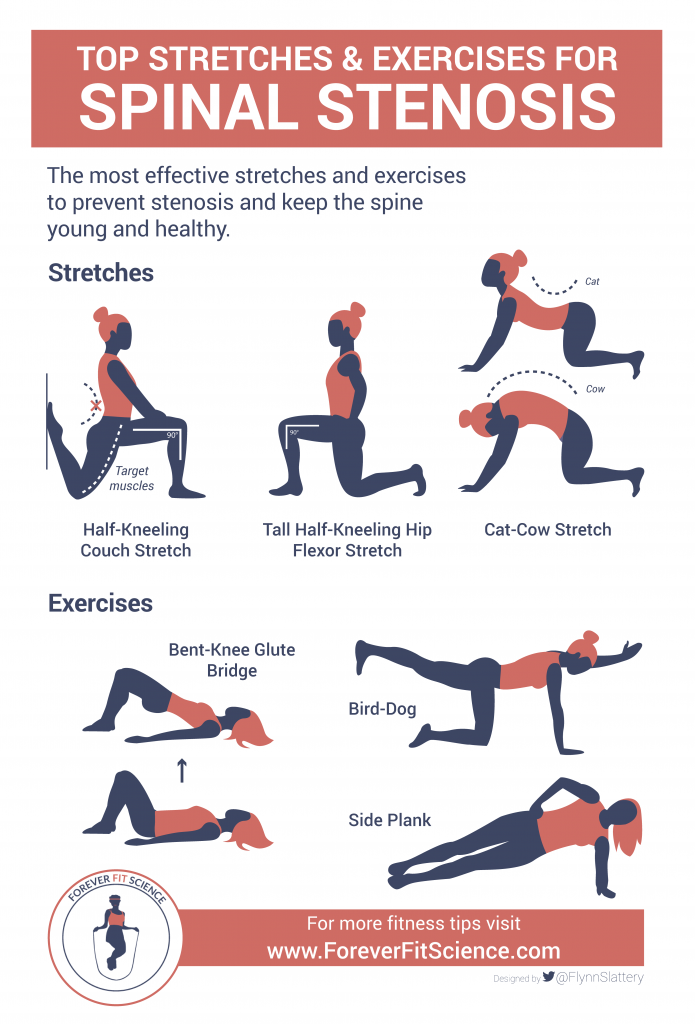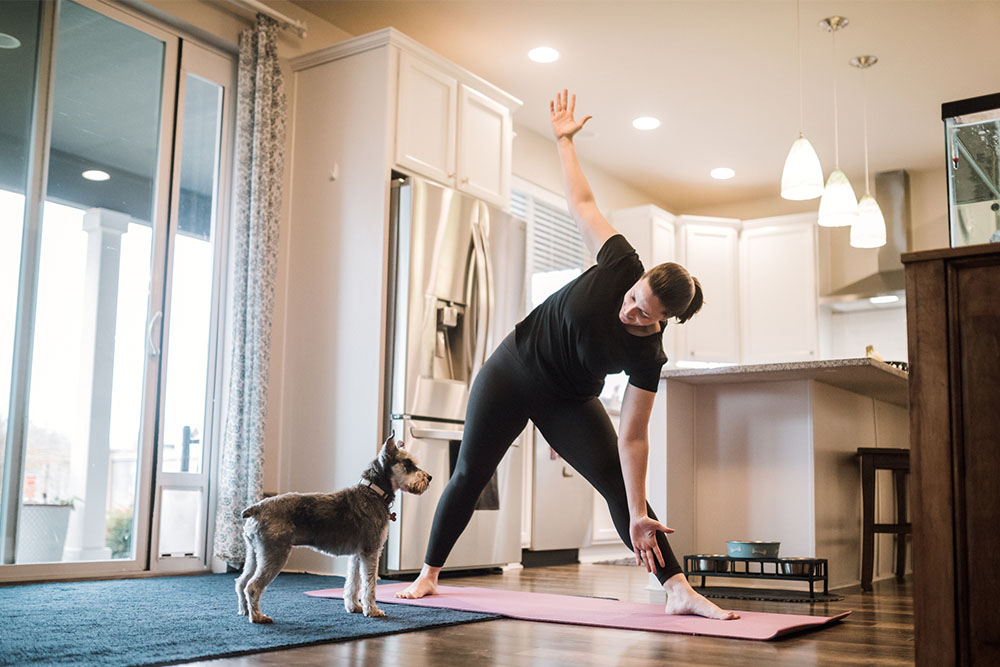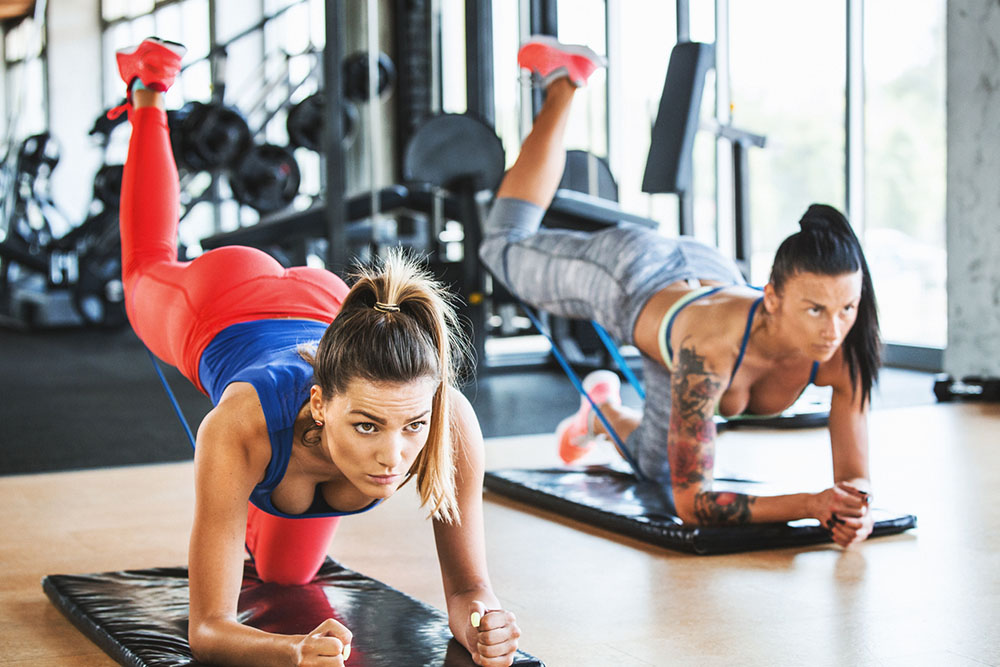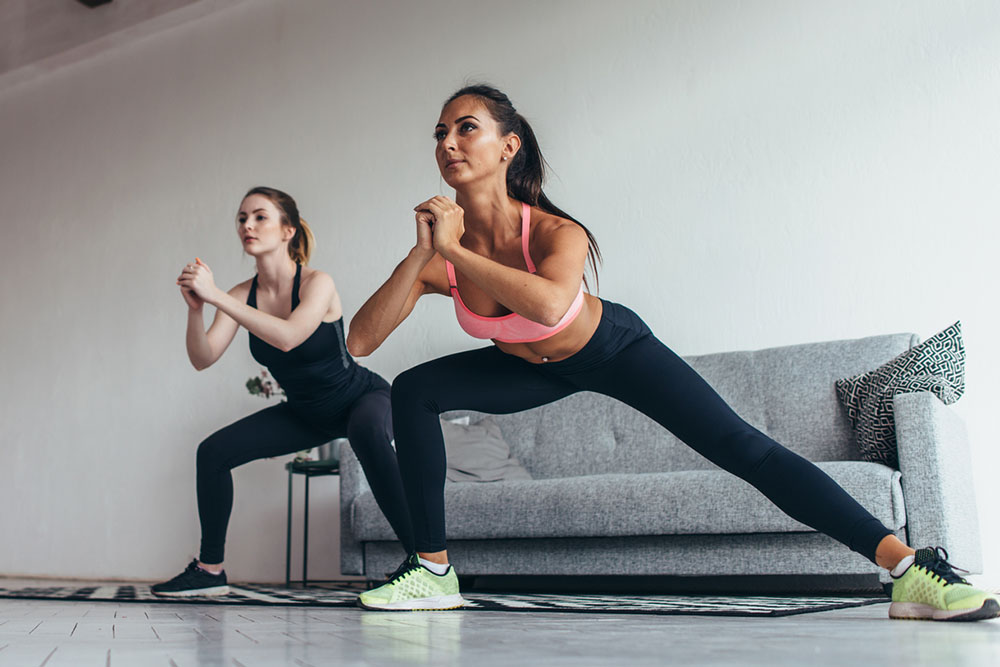Exercise & the Prevention of Spinal Stenosis

Hunter Bennett
Over the last decade or so, we have seen an increase in exercise driven rehabilitation and prevention strategies for several disorders and illnesses. Many of these strategies have been shown to be extremely effective at not only reducing the likelihood of the disease but also acting as a potential treatment to reduce the need for surgical intervention. One area where this conservative prevention methodology has shown great promise is within Spinal Stenosis.
What is Spinal Stenosis?
Spinal stenosis is a musculoskeletal disorder that describes the narrowing of the spaces between the segments of your spine.
While this doesn’t have too many negative implications from a structural perspective, it can result in pressure being placed on the nerves that travel through the spinal canal (Foris, 2018).Spinal stenosis most commonly occurs in the lower back (lumbar stenosis) and the neck (cervical stenosis).
The compression of the nerves as a result of spinal stenosis can lead to a number of nasty symptoms that typically get worse over time. The location of the stenosis can also impact the severity and type of symptoms incurred.
Common symptoms include:
- Numbness or tingling in a hand, arm, foot or leg
- Weakness in a hand, arm, foot or leg
- Problems with walking and balance
- Lower back and sciatic pain
If left unaddressed, stenosis can lead to the development of chronic pain, disability, limited walking capacity, and subsequently, a significant loss of independence (Jarrett, 2012). 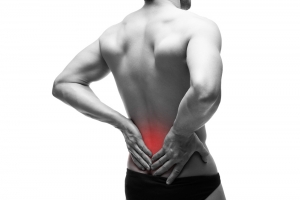 Interestingly, in some scenarios, spinal stenosis can be completely non-symptomatic.
Interestingly, in some scenarios, spinal stenosis can be completely non-symptomatic.
There are individuals who may present with a diagnosable spinal stenosis on an MRI or CT scan, however, have absolutely no symptoms!
What are the Common Causes of Spinal Stenosis?
In short, spinal stenosis is most often caused by changes in the spine related to osteoarthritis and general wear and tear. You see, your spine runs from the base of your head to right down to the bottom of your lower back.
Within this, your spinal segments form a spinal canal, which provides protection and structure to your spinal cord.
Spinal stenosis occurs when something causes that open space within the spine to narrow, compressing either the spinal cord or other nerves leaving the canal.
With this in mind, the most common causes of spinal stenosis include:
- Bone Overgrowth: Osteoarthritic changes within the bony segments of the spine lead to the formation of bone spurs, which can grow into the spinal canal.
- Herniated disks: The spinal discs that act as shock absorbers between your spinal segments can become damaged and herniated. In this scenario, damage to the disk exterior can allow some of the soft inner material to escape into the spinal canal.
- Spinal injuries: Serious spinal trauma can cause dislocations or fractures within the vertebrae. In this setting, displaced bone can damage the contents of the spinal canal, while also associated swelling and inflammation can also place pressure on the spinal cord.
Related Article: How To Treat 7 Common Running Injuries
How Can We Prevent Spinal Stenosis?
One of the most common risk factors for spinal stenosis is age. In fact, individuals over the age of 50 are at a much greater risk of developing this spinal malformation than their younger counterparts – which makes sense if we think about its causes for a second (Chen, 2017).
As we age, structural changes within the body are quite normal. Every single day we are placed in unique positions, whether it be through work, life, or some other random occurrence.
This comes with various joint loads distributed throughout the entire body, which can be exacerbated by simple tasks liking picking up a child or carrying the groceries.
The accumulation of this daily stress can lead to small changes in the bones of the spine, and the discs that cushion them – increasing the risk of stenosis.
Now, while this degeneration is for the most part unavoidable, its severity can be mitigated. You see, the way we distribute load throughout the body is heavily dictated by posture and movement mechanics. If you have poor posture, you tend to stand in undesirable positions – positions that place an unnecessary and excessive load on the spine.
For example, a common postural deviation is anterior pelvic tils, where the pelvis literally rolls forward, creating excessive extension at both the lumbar and cervical spine (Kuramoto, 2011). This places permanent and imbalanced compression loads on the spine, which can cause both disk degeneration and osteoarthritic changes.
Additionally, if we have an inability to stabilize the spine during movement, we tend to see poor movement mechanics as a result.
In this scenario, rather than the spine remaining nice and stable during movement, it moves uncontrollably between flexed and extended positions.
As you can imagine, this constant change in position can result in shear force being placed on the spine, again increasing the risk of the disk degeneration and osteoarthritic changes that contribute to stenosis (Adams, 1995).
But fortunately for us, there are two key things we can do to prevent stenosis and keep the sine healthy. These are:
- Stretching
- Exercise
Stretching for Spinal Stenosis
We have already mentioned that there is a key postural deviation that can contribute to the onset of spinal stenosis, being the excessive anterior tilt of the pelvis.
Now, before we go any further, I want to point out that the pelvis normally sites in a slightly anterior position.
As a result, a small amount of anterior pelvic tilt is considered completely normal in the vast majority of the population. Unfortunately, this tilt can become exacerbated when we spend long periods of time in undesirable positions such as sitting. In this setting the hip flexors, the quadriceps muscle group, and the lumbar extensors, all become short and stiff, essentially dragging the pelvis anteriorly.
With this, the hamstrings tend to get longer to allow for this movement. So, with all this in mind, our best option is to start stretching those key muscles that have become short and stiff (Ammendolia, 2016)
What are the Best Stretches for Spinal Stenosis?
In my mind, there are three key stretches that provide the perfect way to reduce the unwanted postural deviations associated with spinal stenosis. These should be performed daily if you can!
1. Half Kneeling Couch Stretch
The half kneeling couch stretch is the perfect way to target both the hip flexors and quadriceps at the same time. In a kneeling position, commence the stretch by backing both of your feet up against a wall, or against the upper cushion of your couch (hence the name, ‘couch stretch’).
If you are on a hard surface, make sure to place a cushion down on the ground for your knee. Proceed to slide one of your legs backward so that the knee fits into the corner where the floor meets either the couch or the wall. In this position, the shin should be as close to the wall as you can get it, and the toe should be pointed upwards.
You should be in a half kneeling position, with your chest up nice and tall. Squeeze the glute of the back leg as hard as you can to place the anterior muscles of the limb under stretch.
Perform 3 sets of 60 seconds per side.
2. Tall half Kneeling Hip Flexor Stretch
This stretch is similar to the couch stretch, although it focuses more on the hip flexor muscle group, while also helping us lengthen some of those key muscles of the trunk that can also contribute to poor posture.
We are again going to be in a half kneeling position, where you are down on the floor on one knee, and with both knees bent to 90 degrees.
Your bottom knee should be directly under your hip, and your top knee should be directly over your ankle. The toes of your back leg should be pushed into the ground.
In this position, keep your chest up nice and tall, and squeeze the glute of the back leg as hard as you can to place the anterior muscles of the limb under stretch. Once in this position, push the arm on the side receiving the stretch up towards the ceiling and lean away from the stretched limb slightly.
Perform 3 sets of 60 seconds per side.
3. Cat-Cow Stretch
Our final stretch is known as the Cat-Cow, and it has two main benefits.
Firstly, it helps lengthen the lumbar extensors, which can help reverse any unwanted postural deviations.
Secondly, it promotes movement within and decompresses the spinal segments – which can actually help free up space within the spinal canal. Start this exercise on your hands and knees, with your wrists setting directly underneath your shoulders, and your knees directly underneath your hips.
You should be in a position of a neutral spine, with your back flat. Proceed to take a deep 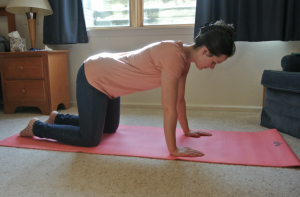 breath in.
breath in.
Next start forcefully breathing out in a slow and controlled manner. As you exhale, round your spine up towards the ceiling, and imagine you’re pulling your belly button up towards your spine (actively engage your abs).
Tuck your chin towards your chest and let your neck release – this is the ‘Cat’ position.
From here, begin to inhale gradually, while simultaneously arching your back.
Let your abs relax and lift your head and tailbone up towards the sky. You should have a firm arch in your lumbar spine – this is the ‘Cow’ position.
Continue slowly transition from ‘Cat’ to ‘Cow’ while controlling your breathing.
Perform 3 sets of 15 repetitions.
Exercise for Spinal Stenosis
In terms of exercises for spinal stenosis, we want to accomplish two key things.
Firstly, we want to strengthen then the muscles of the posterior chain, namely being the glutes and the hamstrings. Increasing the strength of these key muscles will help correct poor pelvic positions, while also helping stabilize the pelvis.
Secondly, we want to strengthen the abdominal musculature. These muscles are responsible for stabilizing the spine and protecting it against unwanted forces – which obviously has a protective effect on any disc-related or osteoarthritic changes (Ammendolia, 2015).
Related Article: The Evolution Of Exercise Prescription In Bone Health
What are the Best Exercises for Spinal Stenosis?
Taking the above points into consideration, there is three ideal exercise to help protect against spinal stenosis.
These should be performed immediately after your stretches, and are safe to be performed every day of the week if you so desire,
1. Bent Knee Glute Bridge
The first exercise is arguably one of the most beneficial movements that you can perform in regard to posterior chain strength and spinal health.
This exercise is similar to a normal glute bridge, however, it is performed with the knees slightly extended to enhance hamstring recruitment. Start by lying face up on the floor, with your knees bent to about 45 degrees, and your feet flat on the ground. Your feet should be about a foot in front of your knees, and your arms should be at your sides with your palms facing down.
Drive your heels into the ground, lifting your hips off the ground until your knees, hips, and shoulders form a straight line.
Squeeze your glutes as hard as you can at the top of the movement and hold for about three seconds, before slowly returning to the ground. You should feel the tension in both your glutes and your hamstrings.
Perform 3 sets of 20 repetitions.
2. Bird Dog
Our next exercise teaches the muscles of the trunk to stabilize the spine while the upper and lower limbs undergo movement.
This is an integral component of protecting the spine during dynamic tasks, making it essential for the prevention of spinal stenosis.
Begin this exercise on all fours with your hands directly under your shoulders and your knees directly under your hips. Actively brace your abdominals, while keeping both your back and pelvis as stable as possible.
From this position, reach one arm out in front of you, while simultaneously driving your opposite leg out directly behind you.
Don’t allow your pelvis or trunk rotate, and focus on not letting your rib cage sag toward the floor. This movement should be slow and controlled. Return to the starting position and repeat on the other side.
Complete 3 sets of 8 repetitions per side.
3. Side Plank
Finally, we have the side plank. This great exercise further challenges the spinal stabilizes, while also integrating the muscles of the hip, thus contributing to improved pelvic control and positioning.
Start by lying on your side with your elbow placed directly under your shoulder. Your head, trunk, hips, knees, and feet should all be in a straight line.
Proceed to brace your core and lift your hips off the floor. Hold this position for the set amount of time, and then repeat on the other side. While your hips are elevated, you should be working hard to stay as stable as possible.
Complete 3 sets of 30 seconds per side.
Take Home Message
Spinal stenosis is a musculoskeletal disorder that involves structural changes to the spine, which can compress the spinal nerves and lead to discomfort, pain, and even movement impairment.
While some of the degeneration that can contribute to this disease is somewhat normal, its severity can be limited – which is exactly where stretching and exercise enter the discussion.
By following the guidelines outlined in this article, you can keep your spine healthy and stave off stenosis for good.
References
Foris, Lisa A., and Scott C. Dulebohn. “Spinal Stenosis And Neurogenic Claudication.” StatPearls [Internet]. StatPearls Publishing, 2018.
Jarrett, Mark S., Joseph F. Orlando, and Karen Grimmer-Somers. “The effectiveness of land based exercise compared to decompressive surgery in the management of lumbar spinal-canal stenosis: a systematic review.” BMC musculoskeletal disorders 13.1 (2012): 30.
Chen, Chaxiang, et al. “Does the effectiveness of core stability exercises correlate with the severity of spinal stenosis in patients with lumbar spinal stenosis?.” Pakistan journal of medical sciences 33.3 (2017): 631.
Kuramoto, Alan, et al. “Lumbar spinal stenosis with exacerbation of back pain with extension: a potential contraindication for supine MRI with sedation.” Journal of Neuroimaging 21.1 (2011): 92-94.
Adams, M. A., and P. Dolan. “Recent advances in lumbar spinal mechanics and their clinical significance.” Clinical Biomechanics 10.1 (1995): 3-19.
Ammendolia, Carlo, et al. “The boot camp program for lumbar spinal stenosis: a protocol for a randomized controlled trial.” Chiropractic & manual therapies 24.1 (2016): 25.
Ammendolia, Carlo, and Ngai Chow. “Clinical outcomes for neurogenic claudication using a multimodal program for lumbar spinal stenosis: a retrospective study.” Journal of manipulative and physiological therapeutics 38.3 (2015): 188-194.
JOIN OUR NEWSLETTER
You Might Like:

